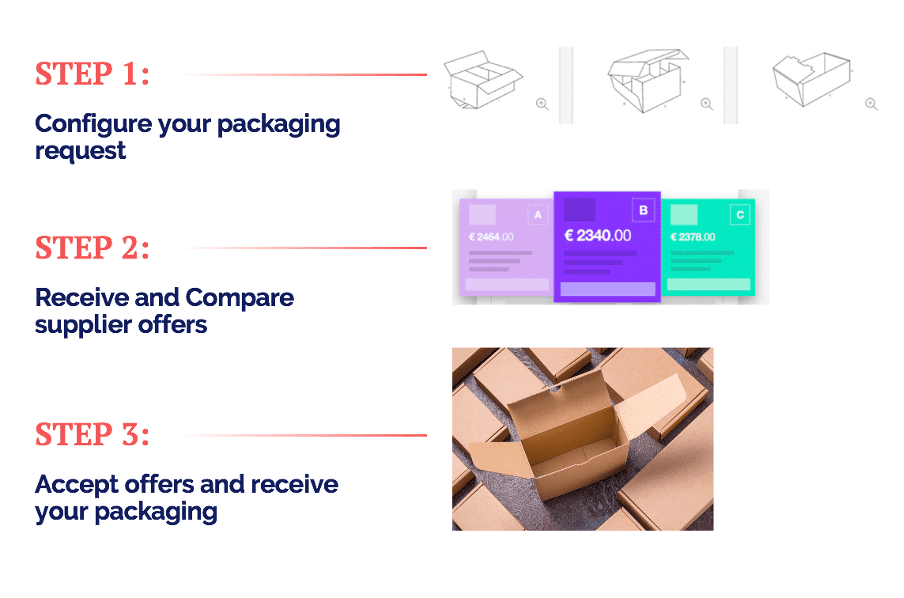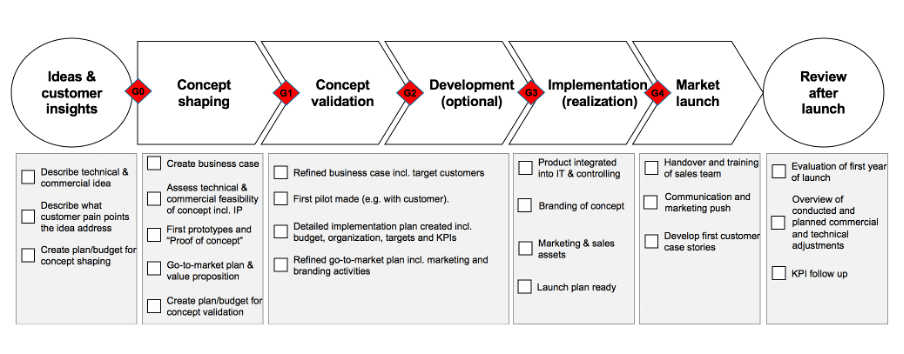
Vertical B2B marketplaces are shaking up traditional supply chains.
Many large industries are still very fragmented. Therefore, they provide ample chances for supply chain renewal with vertical B2B marketplaces.
Big corporations are tapping into this opportunity. They leverage their scale and expertise to create vertical B2B marketplaces such as Tetra Pak’s spare part marketplace.
One of those large, fragmented markets is corrugated packaging. In this blog, I will explore how Stora Enso created Box Inc, a vertical B2B marketplace for corrugated packaging. Furthermore, I will show what you can learn about it.
Corrugated packaging is the backbone of e-commerce
When I started my research on the corrugated packaging, I was not that excited. I thought about a brown storage box. But the more I studied, the more interested I became.

Boxes are the backbone of e-commerce and all commerce. They are so common that we don’t think about them. But every day, there are more boxes, as more and more goods are moved around. Thus, it matters what material these boxes are. Therefore, the supply chain to procure them is critical.
Corrugated packaging has some excellent properties:
- Structural rigidity with cushioning qualities;
- Lightweight and clean;
- Sells your product with high-impact graphics;
- Renewable-sourced and can be recycled to make new boxes and other paper products.
Consolidating fragmented supply chain with a vertical B2B marketplace
Corrugated packaging is a low engagement product. Companies need it, but they don’t want to spend time or money on it. However, the buying process is complicated. Furthermore, the supply chain is fragmented. There is a vast number of suppliers with various offerings. Finding the right packaging, design, quality, and price from a reliable supplier can be tedious.
Large corporations can afford to have a packaging person. However, small and medium-size companies don’t have that luxury.
Mikael Fristedt Westre, now Head of Box Inc, saw this opportunity. The corrugated packaging supply chain was very fragmented. Simultaneously, the packaging is a critical factor for any purchasing decision. And it represents the company brand.
Vertical B2B marketplaces remove friction
Mikael explains, “I had been working with our corrugated packaging business for a few years. I was getting to know both Stora Enso customers and salespeople. One of the conclusions to me was that customers were seeking ways to increase efficiencies throughout their business processes and adopting digitalization as a means of achieving that.”
Mikael and his team were also studying other industries. They were looking for sourcing processes that were breaking with traditional buying processes.
For example, travel was an obvious one. Marketplaces like Airbnb provided convenience for buyers as all offerings were in one place. Another one was consumer financing. For instance, a Nordic lending platform Lendo enabled comparison of loans quickly and easily.
Mikael thought, “OK – I have seen how processes have been completely transformed by digitalization, like in the finance industry, why not corrugated packaging.” This was a perfect opportunity for somebody to take action and consolidate the market.
Vertical B2B marketplaces offer speed, convenience, and transparency
Box Inc is a vertical B2B platform that connects demand and supply. Thus, it is a one-stop-shop for corrugated packaging needs. It provides transparency as buyers can compare various suppliers. Furthermore, it offers convenience and speed. Buyers and corrugated packagers can make a deal in a couple of minutes.
Its customers can create a request for quotation, receive, and compare quotes. Also, they can select the preferred supplier, order, pay, and ultimately re-order. As a result, it saves time and resources. There is no need to search for companies and administer the sourcing process.

And for suppliers, it provides access to new customers. Thus, there is less need for their own marketing. Furthermore, purchasers and requests for quotations are pre-qualified. And there is no need for an e-commerce solution or sales and marketing investments. And a secure payment solution eliminates credit risk.
Create network effects for your vertical B2B marketplace
Platforms live or die on network effects. That is, the value of a platform grows as the number of users increases. The more suppliers join, the more attractive it becomes for the demand side. Therefore, Box Inc didn’t limit to Stora Enso’s customers. It though bigger and decided to open the platform.
To accelerate the adoption of the marketplace, Stora Enso created a separate company. It has its own brand and identity. However, it is still owned by Stora Enso. Creating a separate entity helps to make sure “Chinese walls” are in place.
Data amplify network effects. Data network effects occur when a service becomes smarter as it gets more data from users. Therefore, vertical B2B marketplaces are in an excellent position to create data network effects. For example, Box Inc collects data on both sides. Consequently, it can continuously improve the offering. Machine learning and AI is a great tool to create a learning loop.
As a vertical B2B marketplace gains critical mass, new opportunities to expand the business will emerge. For example, Box Inc customers’ other packaging needs to create cross-selling potential.
Design your business model to accelerate the adoption of the vertical B2B marketplace
Business model plays a critical role in the adoption of a platform. For example, a subscription can be a barrier to join the vertical B2B marketplace. The question is how multisided platforms should monetize their services.
In the business model design, the Box Inc team considered different options. There are some marketplaces where suppliers pay a subscription model. But for that type of model, you need a vast number of suppliers.
Therefore, Box Inc made it success-based. There are no fees related purchasing packaging. But suppliers pay a commission based on actual orders. The supplier pays only if they get a new business. The success-based business model encourages both sides to participate..

Stage-gate innovation process helped to develop the vertical B2B marketplace concept
Box Inx is also a story of innovation inside a big corporation. It shows that traditional companies are adopting platform business models. Especially, B2B marketplaces to reinvent supply chains are popular.
Stora Enso’s annual revenue is over 10 billion euros. It ranks seventh globally by sales. And fourth by earnings, among forest, paper, and packaging industry companies.
Stora Enso applied a stage-gate innovation model for vertical B2B marketplace development. The innovation model consists of five stages:
1. Concept Shaping;
2. Concept Validation;
3. Development;
4. Implementation;
5. Market Launch.
These gates trigger financing. Stora Enso has created different financing sources to foster innovation inside the company. For example, it has a digitalization fund. The fund is for developing new business models, processes, or other ways of digitalizing business. Box Inc received financing in three steps
- seed financing at the concept shaping state
- capex financing at the concept validation stage, and
- capex financing at the market launch stage.
Mikael explains that “the stage-gate model was helpful for me. It helped anchor expectations about our progress with the steering committee. The process was a handrail to hold on to.”

Incumbent advantage
Being a start-up within a large corporation like Stora Enso offers many advantages. For example, it provides access to funding and extensive sales network expertise. Also, legal support is readily available. Furthermore, a big corporate can provide connections to potential suppliers.
Summary
Vertical B2B marketplaces are disrupting supply chains. Box Inc proves the recipe on how to build a successful platform to capitalize on this trend. You can also use these 6 steps to reinvent your supply chain.
1. Find a fragmented supply chain with underserved customers.
2. Start by removing friction from the process.
3. Create a well-focused offering.
4. Create a network effect.
5. As you get more data, learn from it and improve your offering.
6. After gaining critical mass, think of expansion possibilities.
